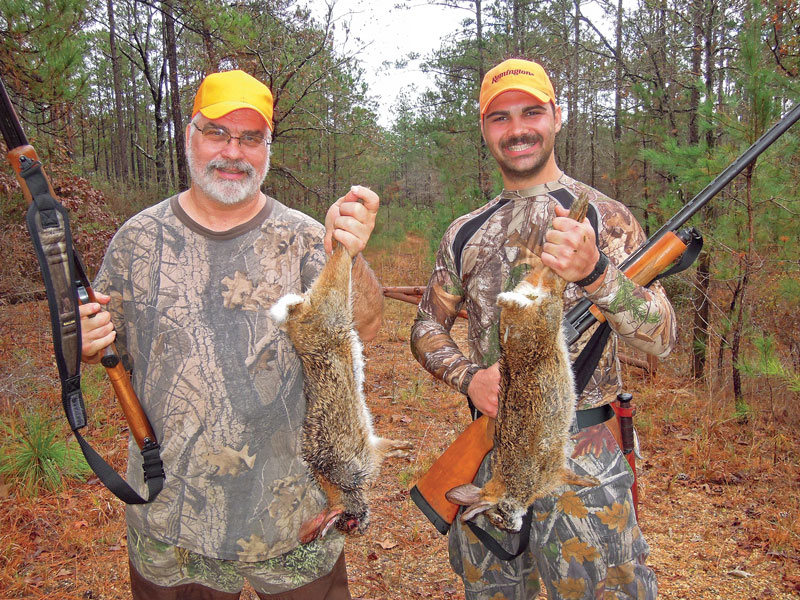
Cottontails, swampers are fair game, even without using dogs
With the eastern sky beginning to brighten one chilly fall morning long ago, Dad and I walked down a trail leading to some hardwoods where we hunted squirrels. A big cottontail hopped across the trail and stopped at the edge of the grass, a fatal mistake. Minutes after shooting hours began, I stuffed my first ever rabbit into a game bag.
At midday, Dad and I explored for more hunting spots. While riding down a dusty forest road, we spotted two cottontails sitting about 50 yards apart. Thinking back, I doubt that Dad truly believed I could possibly stalk one, much less two, rabbits over that long stretch as much as he welcomed the opportunity to grab a cup of coffee and a quick catnap.
The most distant cottontail quickly disappeared into the brush as I exited the truck. Believing I would never see that fleet-footed master of concealment again, I continued toward the other some 100 or so yards away. That rabbit hopped along the side of the road and eventually entered the brush about where the first rabbit vanished. With little hope of success, I continued down the road anyway.
Where the rabbits disappeared, I discovered a small trail leading into the forest. Up the trail, I soon spotted a rabbit sitting broadside to me at the edge of a small clearing about 35 yards away.
One sure thing trumped two possibles, so I squeezed the trigger on my 20-gauge Mossberg Model 500. When I approached to pick up the rabbit, I found two dead ones. Apparently, the second cottontail found its buddy and sat next to it like yoked oxen. I only saw one, but killed both in one shot.
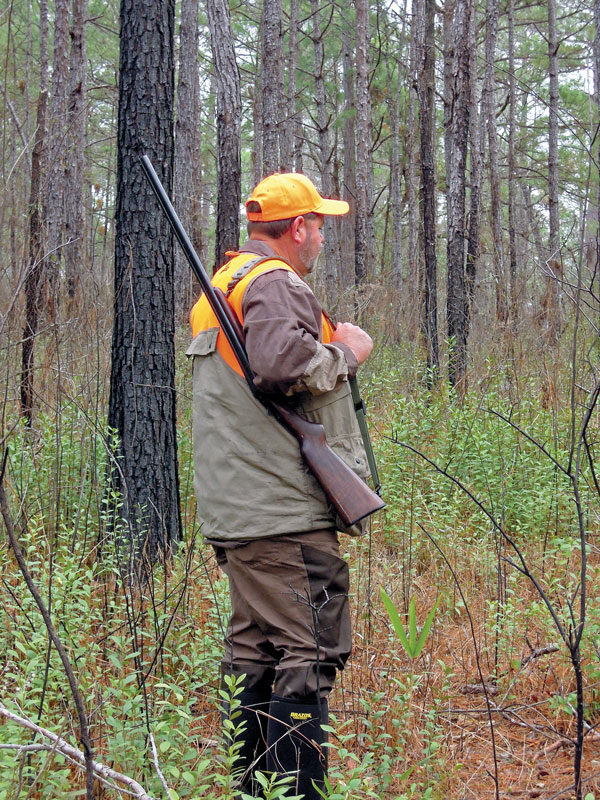
Thick cover
With everything trying to eat the “bread of the forest,” rabbits love thick cover. Therefore, most hunters use beagles to rouse Mr. Longears from his lair. Occasionally, someone bags a rabbit while hunting squirrels or other game, like we did, but people can successfully hunt rabbits without dogs. It just requires planning, effort and considerable luck.
First, go where rabbits go. To us, a bramble patch looks practically impassable, but it could resemble a cathedral to a bunny. Rabbits can run through small tunnels in thickets with ease. They establish their home territories where they know every hiding place.
“We hunt forests with a mixture of cutovers and pine thickets with overgrown fields,” said Toby Dooly from Sarepta. “A rabbit likes his home territory and won’t stray far from its familiar ground where he knows every hole and escape route. When jumped, a rabbit normally runs in a big circle and will come back to where it started. Always be ready and looking. A rabbit could pop out anywhere.”
Highly prolific, cottontails and swamp rabbits both occur throughout Louisiana and Mississippi. Both species like successional growth patches, pasture or forest edges, woody underbrush, briars, log piles, thickets, weedy areas and similar cover where they can escape a host of predators. They frequently share the same territories. Cottontails can live in marshes and bottomland forests, but prefer drier, more upland country.
“A cottontail will generally be in thicker cover toward the ground,” Dooly said. “We jump a lot of cottontails in old fields and briar patches. If we get into some piney woods that have been thinned, we might see some swamp rabbits. A swamp rabbit will run faster, farther and harder than a cottontail.”
Larger than cottontails, swamp rabbits favor wetter landscapes, such as river floodplains, bottomlands, canebrakes and swamps. Excellent swimmers, swampers habitually jump into water to escape danger. They hide under overhanging brush, logjams or root masses with only their noses protruding from the water just enough to breathe until the danger passes.
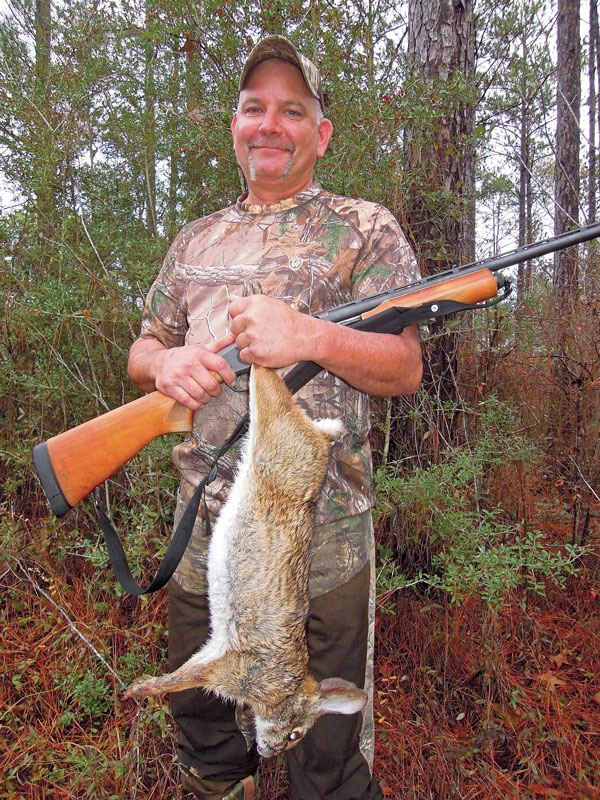
Sure sign
Look for signs of their presence. Cottontails leave small round droppings about the size of peas on dry ground. Swamp rabbits characteristically find a dry log where they do their business.
In a good spot, sportsmen can work as teams. Position several companions at safe distances where they can watch potential escape routes. Send another person smashing through the rough stuff. Wear heavy canvas “brush buster” pants or leather chaps. Some “drivers” carry long sticks to poke clumps to flush rabbits. Make no mistake, though. This job is work.
When crossing fields, walk line abreast separated at safe distances. Kick every grass clump, log or other potential rabbit hiding place. One log or brush pile might harbor several rabbits. When a rabbit bolts from cover, shooters must react fast before a bounding bunny disappears into thick cover. People seldom get a second shot.
“A rabbit hunter never gets that perfect shot,” said Steve Byrd, who hunts the Desoto National Forest near Hattiesburg, Miss. “It will usually be a flash shot.”
It doesn’t take much firepower to stop a rabbit if someone can hit it. Shots seldom come at more than 25 yards. Most sportsmen use short-barreled guns that swing fast and put out a lot of lead. Many people use lighter, smaller bore shotguns with modified or open chokes loaded with Number 6 or 7 ½ shot.
“I hunt with a 28-gauge over-and-under with a modified and an improved cylinder choke,” Dooly said. “We want the pellets to spread out. It doesn’t take much to kill a rabbit if we can hit it. If we can get a couple pellets into it, the rabbit will normally fall right there.”
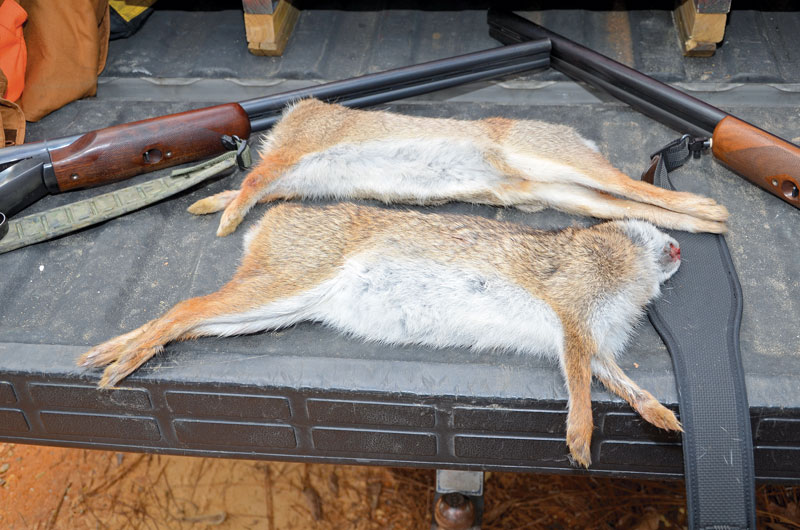
Chokepoints
Sportsmen hunting alone should look for chokepoints that might limit where rabbits can go, such as a break in a fence. Watch any escape routes. In extremely wet places, look for higher ground. Even swamp rabbits don’t like to stay wet all the time. In swamps, overflowing water deposits silt along shorelines, commonly creating slightly higher ground.
“We hunt swamp rabbits the same as we would cottontails, but a swamp rabbit will jump into the water,” said Collins Jenkins of Pine Grove. “A ditch bank or a waterhole is a good place to look for swamp rabbits. Get in a spot with more visibility to better see rabbits.”
In marshes, sportsmen won’t find much high ground, but any drier spots could concentrate rabbits into small areas. When dredging canals and deeper channels, workers routinely deposited mud on the shorelines. In marshes, these spoil banks provide the only high ground around. They grow up with low thick brush, making ideal hiding conditions for rabbits.
“I often hunt around Belle Chasse in Plaquemines Parish,” Jenkins said. “That place has a lot of rabbits. It’s nothing to go down there with a good group of people and kill 80 to 90 rabbits each hunt. The levees in the marsh get thick with underbrush and cover, making it hard to walk in many places.”
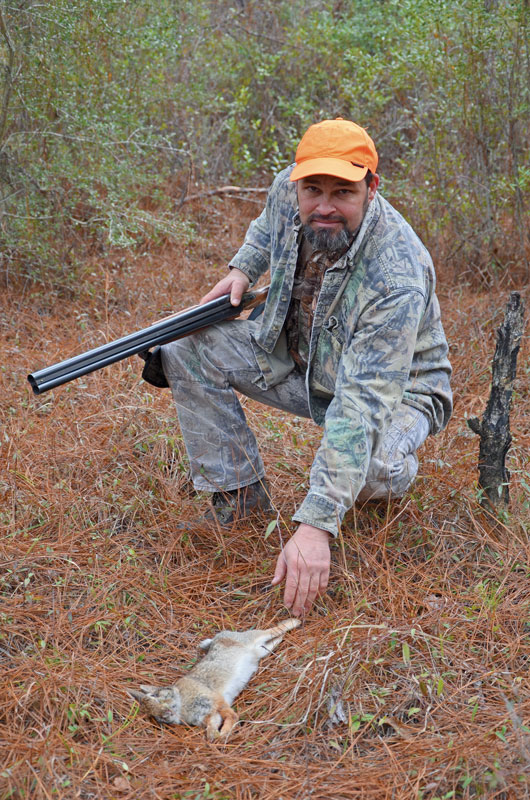
Wear orange!
On these spoil banks, hunters typically can’t see more than a few yards in any direction. With little other dry ground around, they might kick up the same rabbit multiple times. In thick cover, sportsmen need to keep in touch with others near them to avoid accidents.
“I highly recommend that rabbit hunters wear orange hats and vests for the safety reasons,” Byrd said. “It’s not hard to disappear from sight while rabbit hunting. Always make sure you know what you’re shooting at and make sure it’s safe. Always know where the other hunters are.”
At times, sportsmen can find rabbits at longer ranges. With so many predators looking for them, rabbits routinely stay in the thickest cover during the day, but come out at night to feed in fields. At first or last light, sportsmen might spot rabbits sitting at the edge of a crop field, a pasture or any strip of grassland.
Fresh clearcuts or recent burns also create excellent places to look for rabbits. Fire eliminates cover, but it often burns so fast that it leaves a few patches untouched. Several rabbits might cluster into any unburned pockets or other remaining cover.
In addition, removing underbrush allows more sunlight to reach the ground. That encourages fresh, new shoots to grow. A sportsman could walk slowly along a firebreak or recent clear-cut edge at dawn or dusk looking for rabbits to emerge from cover to nibble the succulent sprouts.
Food plots planted for deer regularly attract rabbits. On private lands, sportsmen can climb into their deer stands overlooking food plots. With a good pair of binoculars, watch for rabbits to emerge at first or last light to eat. A scoped .17 or .22 could knock them down wherever they might appear.
In Mississippi, rabbit season runs through Feb. 28, 2024, and Feb. 29 in Louisiana. In both states, most deer seasons end by late January or early February. After deer seasons end, sportsmen won’t see many other hunters even on the most heavily pressured public lands.
Hunting rabbits without dogs offers many challenges, but it could bring rewards. Hunters don’t need to sit quietly. They can socialize and make noise, the more noise the better! That makes rabbit hunting an excellent sport to involve children or novice hunters. They might even get lucky, like one youngster did decades ago!